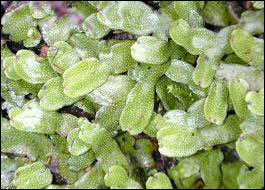|
John Mansel M A succeeded as Rector upon the death of the previous incumbent. He was also a Rector of Furtho and held the Rectorship there for 51 years as well as being Rector of Cosgrove for 31 of those years. He died in 1729 aged 86.
John Mansel the botanist
In Cosgrove, the Reverend John Mansel was instituted as Rector in 1698. Below appear Morton’s notes from 1712 on Mansel’s admirable botanical work, at the Rectory (Medlar House) at Cosgrove.

Botanists started to hybridize tulips. Hybrids and mutations of the flower were seen as rarities and a sign of high status. In the months of late 1636 to early 1637 there was complete "Tulipomania" in the Netherlands. Some examples could cost more than a house in Amsterdam at this time.
There was an inevitable crash in prices in 1637, when people came to their senses and stopped purchasing the bulbs at such high prices. Throughout the 17th and 18th centuries, interest in the tulip remained, but the Dutch became the true connoisseurs and stockists.
Page 380 (Tulips)
With relation to tulips, the ingenious Mr Mansel of Cosgrave, a skilful and experience’d Tulipist, has observed, that the roots raised from seeds in the Netherlands, which are called Breeders, do by various cultures produce variety of variegated flowers of very noble kinds, constant and lasting; according to Dr Lister’s observation in his Journey to Paris. In this manner Mr Mansel has changed very near 200 sorts, some of them admirable and valuable….
To these the ingenious Mr Mansel of Cosgrave adds, the Purple Centory, as we call it; as also Self-Heal; both which he assures me he has found with white flowers, somewhere nigh Cosgrave.
We also meet with wild indigenous herbs, whose flowers are discolour’d in part only, with white. There was brought to him out of the neighbouring field, a Geranium Batrachoides or Crow’s Foot Cranesbill elegantly variegated, its bluish purple flower with white, whose seeds, being sown in his garden, continued to produce the same variety from year to year. And so amongst the common or bluish colour’d Digitalis, a white one being accidentally (tho not unfrequently) found, its seed continues its own colour without any change; as has been proved by above thirty years experience in Mr Mansel’s garden at Cosgrave.
Page 364 (wild plants)

[Two considerable varieties of Liverwort] One…. The other by the Reverend Mr Mansel, in bogs near Cosgrave, with scarlet heads; which perhaps is only a variety of the Lichen minimus, &c capitulis nigris lucidis Raii, Hist Pant, p4.
John Mansel the physician
The Rev John Mansel was performing medical treatments from the Cosgrove Rectory (Medlar House) during his incumbency from 1698 to 1729, described by Morton in 1712.

Page 464 (medicine)
On the Channel bone of Susannah Oldham, of Old Stratford, in the Parish of Cosgrave, of above fifty years of age, there grew a wen as big as an ordinary Child’s Head. Its contents under a musculous coat of about half an inch thick had the appearance of such flocks wherewith the meaner sort of people fill their beds, very closely coagulated into a body, just like the white of an egg when boil’d…….. At length was restored again to her health successfully by the truly worthy Mr Mansell of Cosgrave.
A young maid of Yardley Gubbins, in the Parish of Potters-perry, had the King’s Evil appearing first in her eyes, which in a little time arose upon the inside of the arm, below the elbow, opening by a round ulcer above two inches diameter, which baffled the skill of two London surgeons.After some applications to that ulcer, a tumour rose on her left cheek as big as a hen’s egg, not very painful nor discolouring the skin, and a fluid matter being perceiv’d to fluctuate in it ‘twas open’d by a lancet….. Both sores were in a small time well cured by the ingenious Mr Mansel of Cosgrave, and she continues well these twelve years.
But of all the extraordinary cures in surgery, perform’d by that ingenious gentleman, this, in my opinion is the most considerable.
Gabriel Smith of Cosgrave, a youth somewhat above sixteen, in the beginning of Hay-season, 1704, received a blow upon his eye with a small piece of hard lime, which caused a vehement inflammation and tumour in the eyelid and vessels of the eye, but by a timely application the sight was preserved. The first application was green hyssop stampt, tyed close up in a fine linnen rag, dipp’d in scalding water and bound upon the swelling; this prevented all further ill accidents there and preserv’d the sight. The hyssop was continued upon it every night, and in the day was applied a plaister of Opthalmick Oyntment. But in two days, notwithstanding this, the ball of the ye rose out of its orbit a full inch and a half (yet the sight still preserv’d), with a huffing swelling under the eye. Upon which, considering it came with a contusion, and imagining ‘twas a grumous blood, that occasion’s the protrusion of the eye, a small aperture was made in the tumour under they eye with a fine lancet, at which, according to expectation, a good spoonful of clodded blood was discharg’d, the eye immediately upon the operation sinking one half. The opening was repeated four times, at a distance of about two days each. Whereupon the eye was reduc’d to due place, and all the symptoms vanish’d.
|